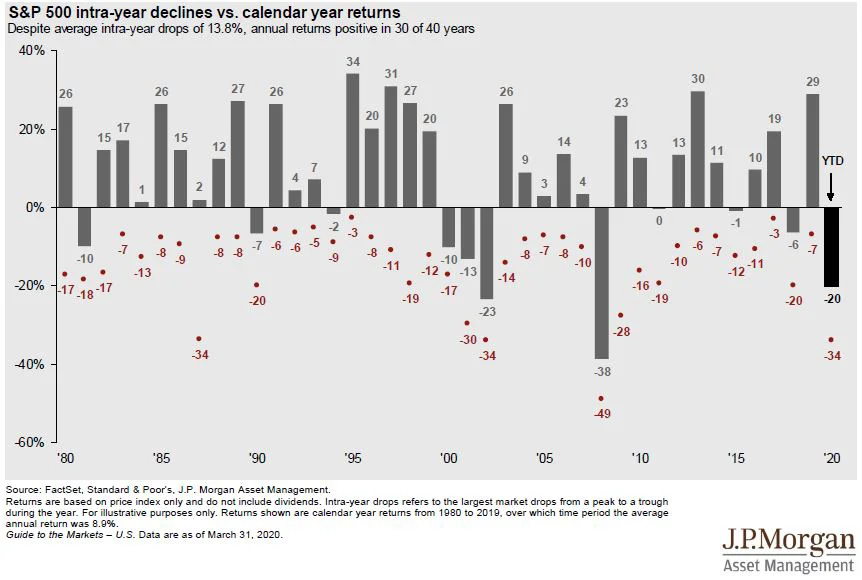
Putting the Market Volatility into Perspective
In an effort to find perspective around market volatility, we look to a chart that J.P. Morgan updates every quarter tracking intra-year declines. This chart maps annual gains or losses by the S&P 500 Index from 1980 through March of 2020. The annual returns are denoted by the grey bars. Notice there are many more positive grey bars than negative. In fact, it’s about 1 every 4 years that end up having a negative annual return. That statistic is based on an annual January 1 to December 31 calendar year.

However, if you also look at the red dots and their corresponding values you will find that many of those positive yielding calendar years had a period within the year (“intra-year”) that was negative. For example, in 1998 the market was up about 27% for the year but at some point “intra-year” the market was down 19%. Measuring from 1980, the average intra-year decline is 13.8% annually. This puts some of the market volatility into perspective: On average, we can expect that at some point in the year the market will dip down about 14% yet still have positive returns 3 of every 4 years.
It also serves as a helpful reminder when trying to assess portfolio performance and picking selective timeframes. The shorter the time frame, the more likely that you’ll catch some of these dramatic swings in the market in your performance calculations and that can cause a lot of anxiety (or bliss!) depending on what start and stop point you reference. Instead, we like to review rolling period returns of 5 years or more to smooth out these market fluctuations and keep focused on the long term.
*The information provided is based on information provided by you and is only an estimate based on that information. Windward Wealth Strategies does not offer tax planning or legal services, but may provide references to accounting, tax services or legal providers. They may also work with your attorney or independent tax or legal advisor. A qualified tax professional or independent legal counsel should review the tax implications of any securities transaction. This material is not intended to replace the advice of a qualified attorney, tax advisor, financial advisor or insurance agent. Before making any financial commitment regarding the issues discussed here, consult with the appropriate professional advisor.
